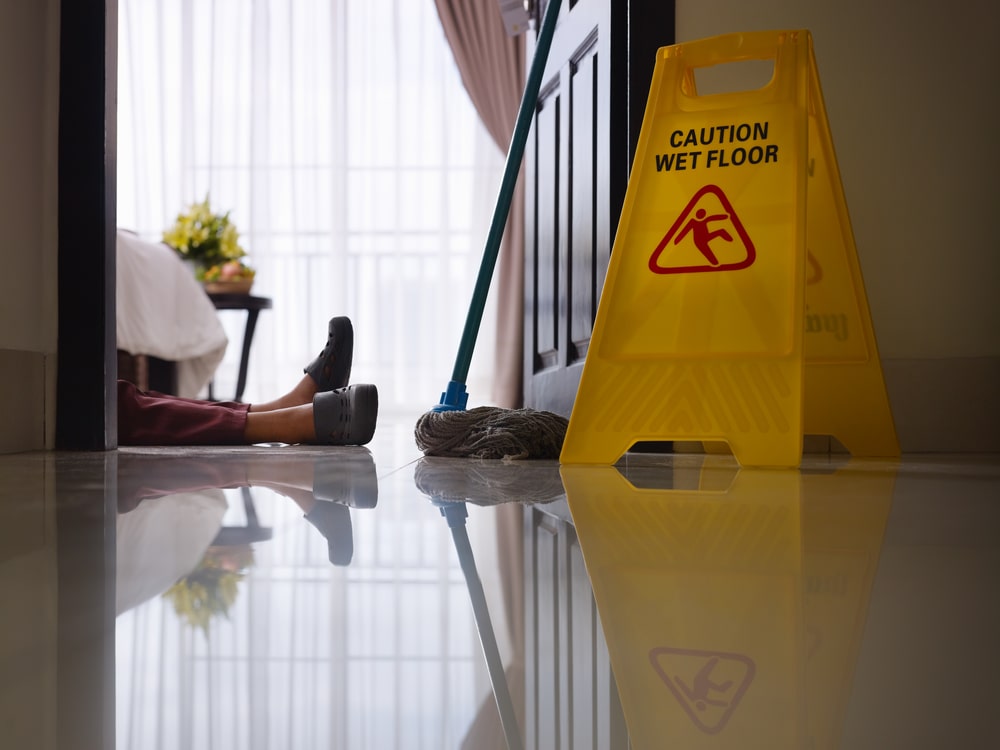
School zones are busy, high-traffic areas that involve both children and adults moving quickly through parking lots, sidewalks, and playgrounds. With so much activity in a short amount of time, it’s not uncommon for someone to experience a slip and fall. When that happens, the question of who is responsible can become important — especially when injuries are involved. A slip and fall lawyer can help evaluate whether the fall happened due to unsafe conditions and if someone may be held legally accountable.
Attorneys like those at Tuttle Larsen, P.A. often deal with situations where school property, maintenance staff, or even third-party contractors may play a role in allowing a hazard to exist. Slip and falls at schools are not just limited to students — they also involve parents, guardians, and visitors who have a right to expect reasonably safe conditions.
Common Hazards Around Drop-Off Zones
Drop-off zones are typically paved areas where children are let out of vehicles. These areas can be slippery due to water, oil leaks, or debris. Sometimes, painted lines or crosswalks become slick in wet weather. Uneven pavement, potholes, and poor drainage can also increase the risk of a fall. In some cases, maintenance issues like broken curbs or loose gravel go unnoticed until someone is injured.
School districts and property managers are expected to inspect and maintain these areas. If they are aware of a hazard — or should have been aware of it — and do not correct it in a timely manner, they may be liable for resulting injuries. This also counts if there is confusion due to poor communication around the drop-off zone that results in a rushed slip and fall.
Playground-Related Slip And Falls
Playgrounds are designed for fun and physical activity, but they can also present risks. Children may fall while running, jumping, or climbing, but the cause of injury matters. If the surface is poorly maintained, missing safety materials, or uneven, it could be considered a dangerous condition. Wet or muddy areas, loose rubber tiles, or debris like tree branches can all contribute to a fall.
It’s also important to consider supervision. In some cases, a lack of adult monitoring or overcrowding contributes to unsafe behavior that leads to injury. While not every fall on a playground is actionable, some are caused by preventable hazards. The type and severity of injury play a huge part in whether or not this is a case that can be pursued.
Who May Be Responsible
Liability in these situations depends on who controls and maintains the property. Public schools are typically operated by school districts, which may have immunity in some cases, but not all. Private schools are more likely to be treated like any other property owner. If a cleaning crew, landscaping company, or vendor creates or fails to fix a hazard, they may also be included in a claim. Even if multiple parties are responsible for the issue, they can all be held liable.
A personal injury lawyer will often look into maintenance records, inspection logs, witness statements, and other evidence to determine whether the fall could have been avoided. Even something as simple as failure to salt a walkway during cold weather could support a claim if it resulted in injury.
What To Do After A Fall
If you or your child experiences a fall at a school drop-off zone or playground, it’s important to report the incident to school staff and seek medical attention. Taking photos of the scene and any visible injuries can also help preserve useful evidence.
Schools are places of trust, and when unsafe conditions cause harm, there are legal steps that can be taken. As lawyers can attest, the importance of acting quickly and gathering accurate details in the early stages of a claim.
If you have questions about a slip and fall on school property, consider reaching out to a local attorney to discuss your options. They can help determine whether there’s a basis for a legal claim and guide you through the next steps.
